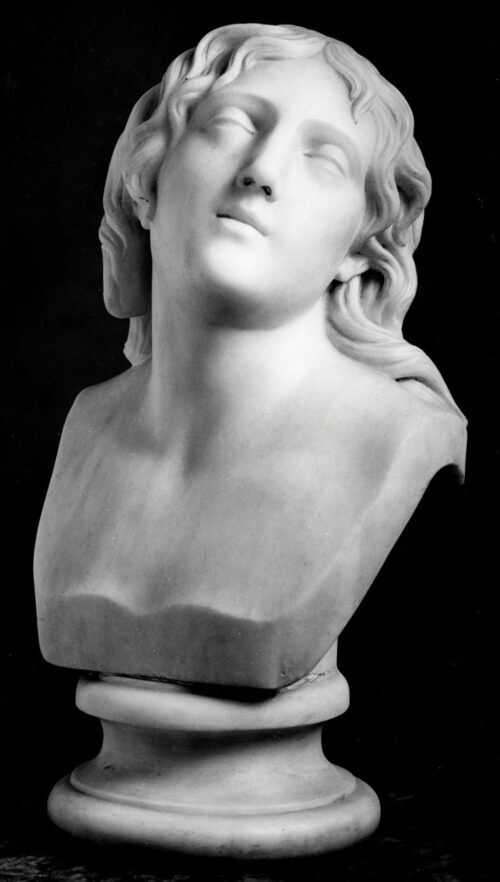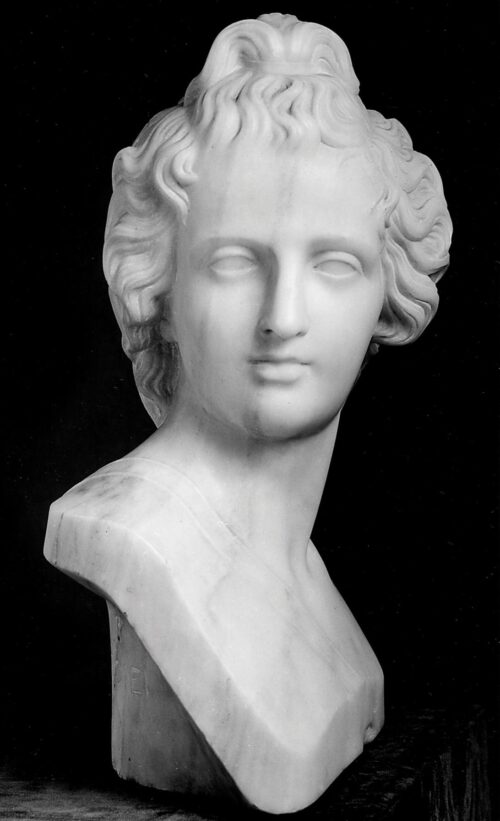
Kossos Ioannis (1822 - 1873)
The Night, 1864
Son of the wood carver Petros Kossos, he had already become an accomplished sculptor by working with his father before beginning his studies at the Athens School of Arts in 1847. In 1849, on scholarship from the Naval Ministry he went to Rome, where he studied for four years at the St Luca Academy. Finishing his studies, and with a two-year interval in Paris and London, he returned to Athens in 1855 and established his own studio, which became a true school for several sculptors of the following generation.
While still a student, his work was presented in exhibitions at the National Techical University, Athens (1847, 1848). He also participated in the Olympia exhibitions (1859, 1870, 1875), as well as the International Exhibitions in Paris (1855), London (1862) and Vienna (1873).
He pursued allegorical and mythological subjects and produced funerary monuments and busts, particularly of Greek revolutionary heroes, coming to be considered as a national sculptor. He drew his models from classical Greek sculpture and contemporary neoclassicist works, as expected from his studies. Neolassicist principles prevail in his oeuvre: a generalising approach, idealisation of figures; white, smooth surfaces, pupilless eyes, harmonious proportions of individual parts and clear outlines.

The Night, 1864

Adelais Ristori, 1867
The Night, 1864

Patriarch Gregory V of Constantinople, 1861

Psyche, 1858

Eros, 1858

King George I, 1864

Alexandros Mavrokordatos, [1866]

Ioannis Kapodistrias, [1866]

We use cookies to make our site work properly, to personalize content and ads, to provide social media features and to analyze our traffic. We also share information about how you use our site with our social media, advertising and analytics partners. Read the Cookies Policy.
These cookies are necessary for the website to function and cannot be switched off in our systems. They are usually only set in response to actions made by you which amount to a request for services, such as setting your privacy preferences, logging in or filling in forms. You can set your browser to block or alert you about these cookies, but some parts of the site will not then work. These cookies do not store any personally identifiable information.
If you disable this cookie, we will not be able to save your preferences. This means that every time you visit this website you will need to enable or disable cookies again.
These cookies tell us about how you use the site and they help us to make it better. For example these cookies count the number of visitors to our website and see how visitors move around when they are using it. This helps us to improve the way our site works, for example, by ensuring that users find what they are looking for easily. Our website uses Google Analytics for statistics reporting.
Please enable Strictly Necessary Cookies first so that we can save your preferences!